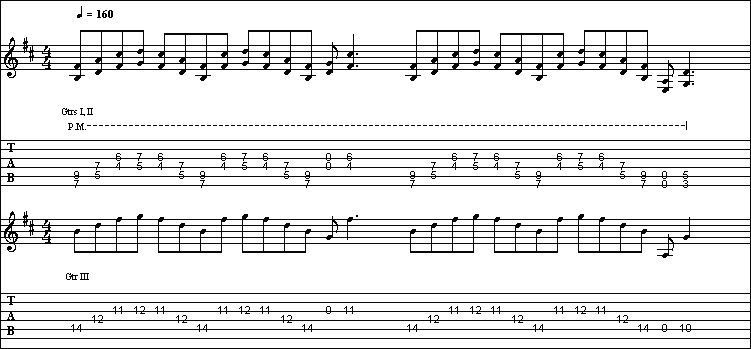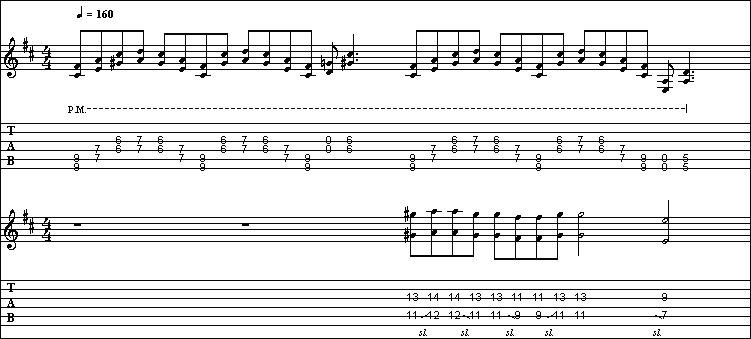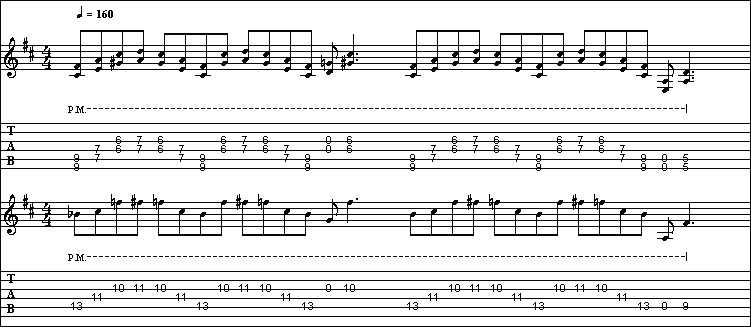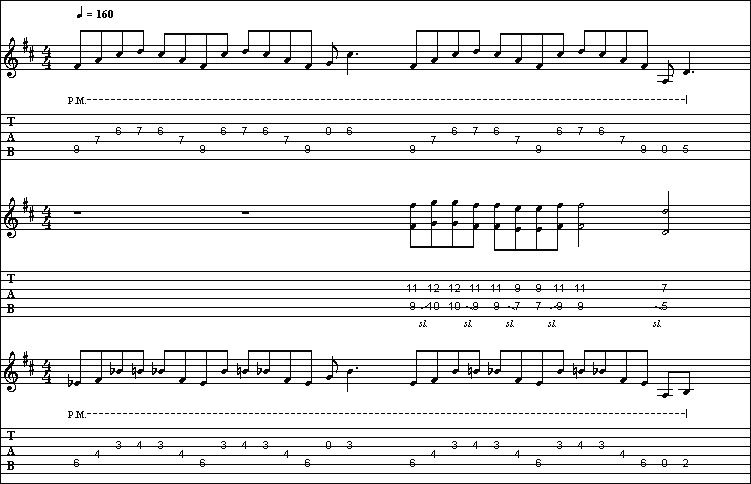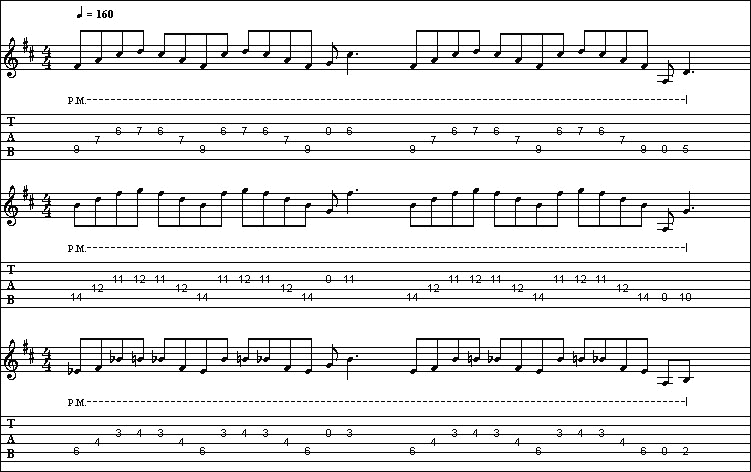GUEST COLUMNIST:
MARK SCHUSTER
Mιnage ΰ trois
(Three-part Harmony)
In my last article here on CFH entitled "X-press Yourself!", I wrote about musical expression and how important it is to have in your guitar arsenal of skills. I'm going to take one piece of that article a step further and talk about the interesting nature of three-part harmony.Harmonies are an important part of my guitar playing and song writing. They provide great texture to any guitar instrumental. Recently I've been experimenting with three-part harmonies. I'd like to share a little of what I've found. As with most explorations of the guitar this journey is just starting for me. I've always really dug the guitar harmony work of Brian May, Ronnie Le Tekro and Tom Scholz. All true pioneers in their own right. What makes harmonies so cool is that they're like a matrix. There are so many different combinations of notes that the slightest deviation paints a completely different picture. Given this, coming up with different combinations is enough to keep anybody busy, and interested, for some time! So if you're like me and get bored easily this might be your bag.
I wrote a short new tune for this article to play with three-part harmonies a bit. It's called "Quantum Singularity" (black hole) [Hear the entire "Quantum Singularity" track at http://www.mp3.com/markschuster, it rocks -ed.]. I named it that because of its occasional unpredictability and bizarre departures (dissonant three-part harmonies) from time to time. The song's got a little bit of everything including standard two-part harmonies. I didn't do it consciously (as far as I know) but the song interestingly enough builds nicely from a single guitar voice to a dual voice and finally to three a few times in the song. (The great part about personally transcribing one of your own tunes is how interesting it is to visualize what occurred during the fast and furious creative writing stage. It really opens some doors to understanding your own taste as an artist and sometimes exposes where you need to improve or diversify.)
I'll outline a few sections of the song here and have the entire song available at the end of the article with the complete tab (Powertab (.ptb) or HTML format).
This early section is simply building on the initial theme by adding the same riff an octave higher, and then adding the pattern a fifth above for a little padding and power.
The main theme of this song is very simple, melodic and pleasing to the ear. However, the next two passages modulate slightly and experiment with some interesting, slightly dissonant, intervals between the three patterns that keep the listener awake.This section augments the three-part harmony above by modulating "harmony 1" up a whole step, keeps "harmony 3" on the fifth and adds a "dab will do ya" of strangeness by lowering "harmony 2" a half step.
Finally, mimicking the first section above, "harmony 2" and "harmony 3" remain the same, while "harmony 1" moves a whole step and a half down to D# (flat fourth).
Questions /comments?
Email: schuster_mark@hotmail.com
My site
Free mp3s by Mark SchusterI'd like to give a big THANKS to the Webmaster of CFH, and killer axe-man, Chris Brungardt for his dedication and commitment this site for without this - none of this would be possible! (ed. note - "aw shucks, Mark...glad to have you back at the site!")
Complete tab in Powertab (.ptb) and HTML.
